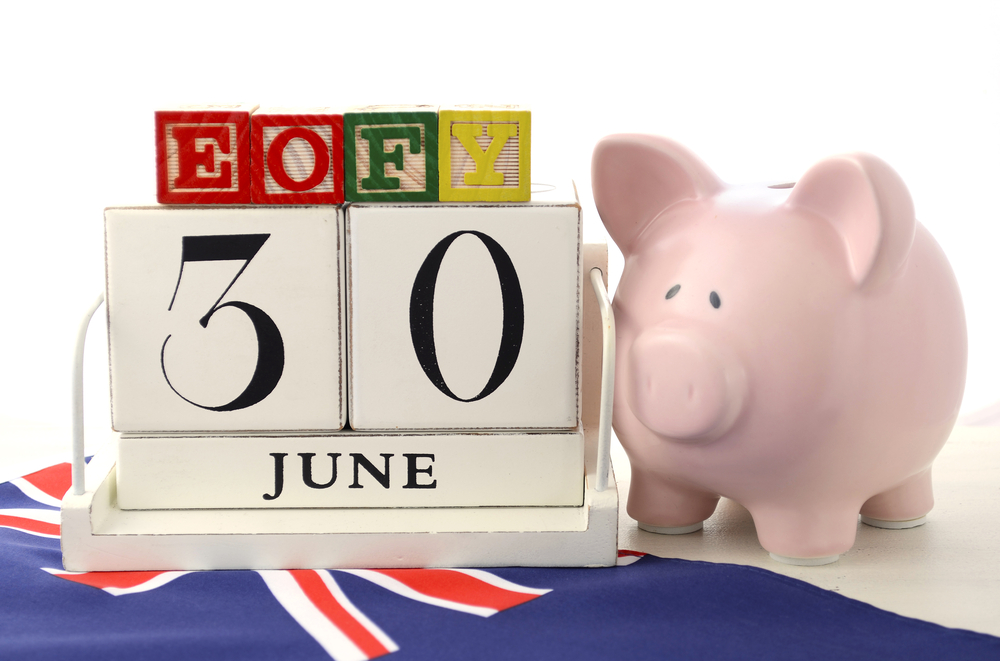
Essential checklist for the end of financial year
The end of financial year on 30 June is a good time to take stock and get your finances in order.
 Being prepared, reviewing your super contributions and submitting your return on time are good policies every year, but the shadow of COVID-19 (coronavirus) means many of us face unexpected pressures in a changing economic environment.
Being prepared, reviewing your super contributions and submitting your return on time are good policies every year, but the shadow of COVID-19 (coronavirus) means many of us face unexpected pressures in a changing economic environment.
This is an end of financial year like no other. Many people will have concerns around job security, which makes long-term planning seem less important.
You may face urgent priorities for your money, such as mortgage repayments, covering bills and paying down debt.
If you’ve worked from home this year, the government has recently released guidance on claiming working from home expenses as a tax deduction. Due to COVID-19, this financial year the ATO will accept a shortcut method for calculating running expenses from 1 March to 30 June.
Here are some other things to consider as 30 June approaches.
- What’s new this year if you’re at or near retirement
Changes kicking in this financial year include lower minimum pensions draw-down requirements to help retirees affected by significant losses in financial markets as a result of COVID-19.
The minimum annual payment required for account-based and allocated pensions and annuities has been cut by 50% in the 2019–20 and the 2020–21 financial years.
If you’ve recently retired, you may still be able to make voluntary super contributions and potentially claim a tax deduction for personal super contributions. Current regulations allow eligible ‘recent’ retirees, aged 65 and over, a limited exemption from having to meet the work test, which is otherwise required to make voluntary super contributions. This applies to contributions made from 1 July 2019.
This is also the first year that those who are eligible can use unused carried forward concession cap amounts from the previous financial year.
First applications for early release of super withdrawals up to $10,000 must be made by 30 June. A further application can be made between 1 July and 24 September 2020.
Super fund members born between 1 July 1962 and 30 June 1963 will reach their preservation age during the 2020/21 financial year and may wish to consider whether a transition to retirement pension is appropriate.
Proposed changes
From 1 July 2020, the following proposed changes, if legislated, may benefit members aged 65 and 66 who want to make additional contributions to super.
-
- Up to age 67 (currently 65) you will be able to make personal and non-mandated employer contributions to super without needing to satisfy the work test (ie been gainfully employed for 40 hours in 30 consecutive days during the financial year in which the contributions are made).
- You will be able to access the bring forward provisions for the non-concessional cap up to age 67 (currently 65). This means you will be able to contribute up to $300,000 to super (you can generally bring forward up to $300,000 if your total super balance on the previous 30 June is less than $1.4m, or up to $200,000 if it’s less than $1.5m). Note that legislation on this change hasn’t yet been passed.
- The maximum age at which you will be able to receive a spouse contribution will increase from 70 to 74.
- Super contributions
End of the financial year is usually a good time to think about making extra contributions to take advantage of the lower rates of taxation on super.
While that might be harder this year with competing priorities, it still makes sense to keep in mind that additional contributions today could boost your super balance in the future. There are a number of different types of contributions to consider. You may also be able to reduce your taxable income and pay less on investment earnings.
To claim a tax deduction on your post tax contributions, you need to tell your super fund by filling in a notice of intent. You will generally need to lodge this notice and have the lodgement acknowledged by your fund, before you file a tax return in the year you made the contributions.
If you’re earning more than your partner and would like to top up their retirement savings, or vice versa, you may want to think about spousal contributions. The spouse making the spousal contributions could be eligible for a tax break.
You and/or your partner may also be eligible to receive a government co-contribution. If so, you might consider making a personal non-concessional contribution before 30 June to make sure you receive the matching government co-contribution for the 2019-20 financial year that you are entitled to.
- Insurance
If you have income protection cover, and your budget allows, you may consider pre-paying your premiums 12 months in advance to take advantage of claiming a bigger tax deduction this year. This may work well if your income is higher in the current income year than next.
However, it is important to get some tax advice as to whether doing so this year is a good idea for you based on your income.
- A bumper year for bargains?
Tax time often tempts retailers to discount older stock from computers to cars. This year, the awakening of the hibernating economy may see more businesses keen to generate short-term cash flow by lowering prices or extending credit terms.
Having switched to cashless payments during lock-down, many retailers may keep these arrangements and pay more attention to online sales.
Shopping via your phone or other online device means you don’t have to rub shoulders with anyone at the office supplies discount bin. You also don’t have to leave home to use price comparison sites such as Finder or Compare the Market to seek out a better deal on everything from children’s toys to pet insurance.
Remember to hang onto your receipts for anything relevant to your work for tax time.
- Key dates
Online lodging has made most tax returns quicker and easier than the days of losing paper receipts. Lodging on time keeps the ATO happy and means that if you’re in line for a refund, you’ll get your money faster.
Individuals can lodge a tax return with the ATO from 30 June. If you’re doing it yourself, you have until 31 October 2020 to lodge it, or potentially longer if you’re using a registered tax agent.
For businesses, super guarantee contributions for the current quarter are due by 28 July, however, if you want to be able to claim these contributions as a tax deduction in the 2019–20 financial year they must be paid by 30 June.
- Talk to a professional
To discuss your situation and how you may benefit from these strategies, please feel welcome to get in touch. Reach out to the JBS Financial to help you prepare for your end of year commitments.
Source: AMP







 As scores of small businesses face shifts in consumer behaviour due to COVID-19 (coronavirus) there’s never been a better – or more important – time to consider pivoting your model, offerings or services to suit the ever-changing world. While many aspects of our lives remain in flux during times of crisis, there are a few emerging trends expected to outlast the pandemic that could alter your company – for the better.
As scores of small businesses face shifts in consumer behaviour due to COVID-19 (coronavirus) there’s never been a better – or more important – time to consider pivoting your model, offerings or services to suit the ever-changing world. While many aspects of our lives remain in flux during times of crisis, there are a few emerging trends expected to outlast the pandemic that could alter your company – for the better.
 But whether you’re an old hand at this or still an apprentice, the uncertain and often frightening course of this rapidly unfolding pandemic can upend even the most stoic of temperaments.
But whether you’re an old hand at this or still an apprentice, the uncertain and often frightening course of this rapidly unfolding pandemic can upend even the most stoic of temperaments.
 If retirement’s coming up on your horizon, the impact of COVID-19 (Coronavirus) may have thrown a warehouse-sized rack of spanners in your planning.
If retirement’s coming up on your horizon, the impact of COVID-19 (Coronavirus) may have thrown a warehouse-sized rack of spanners in your planning.
 Invariably that single asset is an investment property for which the SMSF has borrowed money through a limited recourse borrowing arrangement (LRBA). While property has historically provided good returns over the long run, this is not always a good recipe for providing income in retirement.
Invariably that single asset is an investment property for which the SMSF has borrowed money through a limited recourse borrowing arrangement (LRBA). While property has historically provided good returns over the long run, this is not always a good recipe for providing income in retirement.


 These days it’s easy to order just about anything on demand. With the tap of a button, you can stream the latest music, have food and drinks delivered to your door and choose a new outfit with next-day delivery. But convenience could be costing more than you realise, with serious consequences for your future financial security. And with the growing number of ‘set and forget’ payments for subscriptions and services consumers are often footing the bill for things even when they’re not really using them.
These days it’s easy to order just about anything on demand. With the tap of a button, you can stream the latest music, have food and drinks delivered to your door and choose a new outfit with next-day delivery. But convenience could be costing more than you realise, with serious consequences for your future financial security. And with the growing number of ‘set and forget’ payments for subscriptions and services consumers are often footing the bill for things even when they’re not really using them.
 They understand that moving out of positions in falling markets risks crystallising losses at the bottom and missing out on the recovery.
They understand that moving out of positions in falling markets risks crystallising losses at the bottom and missing out on the recovery.


